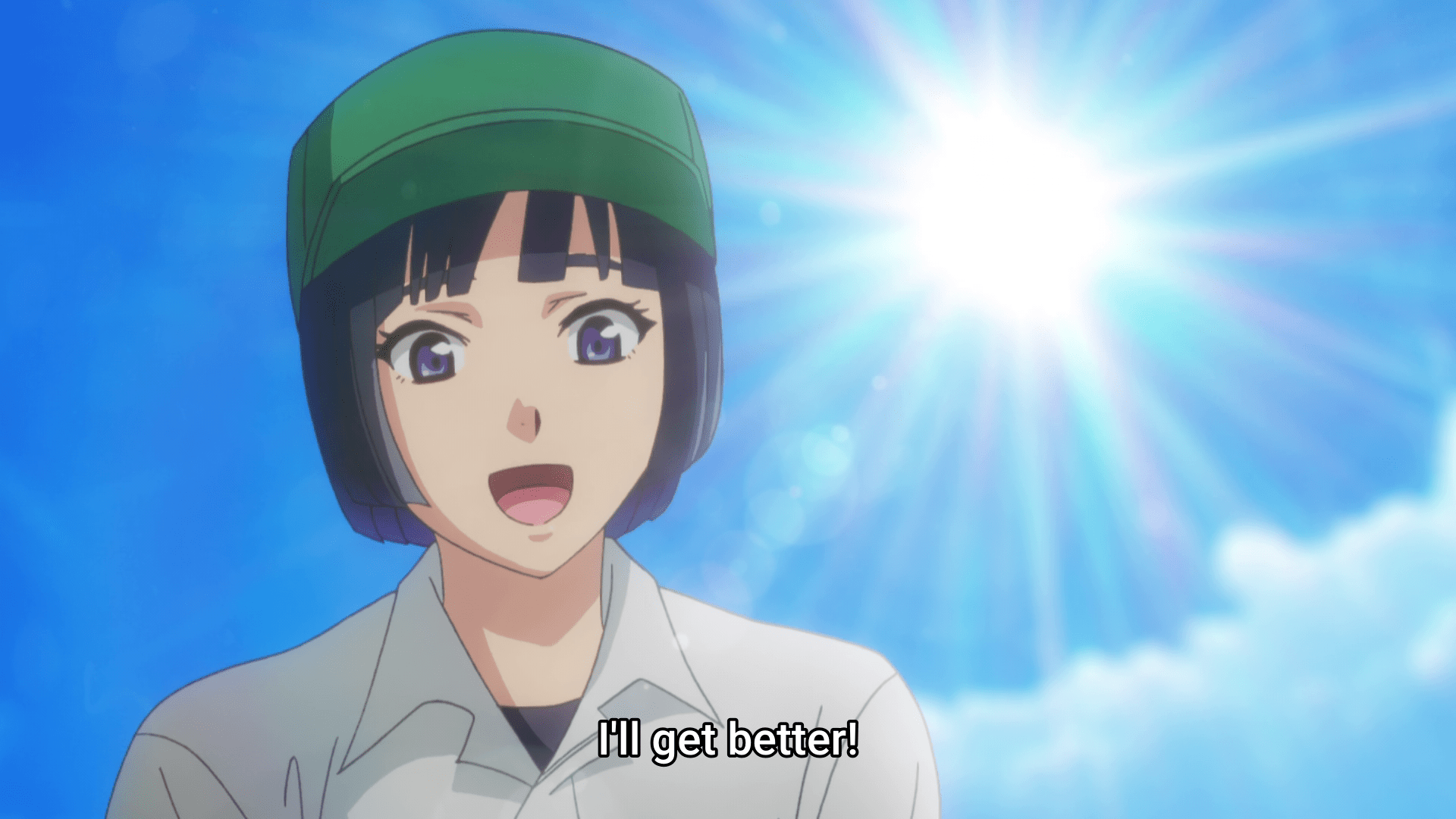some thoughts on the Birdie Wing finale, trade groups, Madlax, mpreg, and the retreat to the allegorical
published on

Bit of a letdown, huh?
In retrospect maybe this was inevitable, given the involvement of a trade group (ALBA, formerly Global Golf Media Group) in the production. A golf that destroys you and everyone you love is not exactly what marketers are looking for to advertise the sport of golf to anime fans. Which is perhaps why instead we got contrived timeskips (plural!) that solved everyone’s problems (Eve’s ban from the sport, and Aoi’s previously-terminal golf disease) and let the girls tee up where they left off.
But it’s hard not to be bitter about it. The first part in particular was a show unafraid to, well, choose violence – like when Rose is suddenly murdered at the end of the first arc. It felt like a show confident in what it was doing. The comparison I drew at the time was with the third episode of Madoka when Mami is unexpectedly and unceremoniously killed. But having now seen Madlax, which had the same writer as Birdie Wing (Yosuke Kuroda), I see similarities there as well: many of its characters do not survive that show.
But in the second part of Birdie Wing, it began to lose its edge. The “insatiable thirst for nonsense” remained, but the stakes weren’t what they had been – at least until the final arc, when Eve and Aoi’s golf-induced afflictions threaten their ability to play (or even live, in Aoi’s case).
But you know what happens next. Aoi does forfeit the British Open,
but she steps in as Eve’s caddy to help Eve win. They achieve a
synthesis of their golf styles (in the same way that Eve’s two dads once
did, i.e., through the power of gay sex), and defeat the reigning
champion of golf, Lunar Princess Ranni Juha.
Which is all well and good, but Aoi still has terminal golf disease, and Eve has just been banned from the sport for three years after her illegal underground golfing past comes to light. But then we get two (two!) timeskips: first three years, after which Eve reappears, and then immediately another year, when she once again meets Aoi, miraculously cured, and they resume their game. Roll credits.
Again, given that this was produced in cooperation with the golf lobby, it’s not surprising that we didn’t get the ending where Eve and Aoi tie for first and then the dust clears and they’re lying completely dead on the fairway. But I like to think that there was still room for a less contrived ending. One of the reasons I liked Madlax so much, and why it was markedly better than Noir, was the fact that Kuroda was willing to prioritize the allegorical. The plot of Madlax as a literal series of events makes very little sense, but it absolutely doesn’t matter, because those events are clearly used as scaffolding for the meta-narrative, which is about (broadly speaking), the struggle to remain human in a world of inhuman cruelty.
A retreat to the allegorical could have served Birdie Wing well. The show remained in the realm of the literal by and large (despite some absurdities, like Catherine’s underground randomized golf course), but it did flirt with the supernatural: the main characters each have their own signature style of golf, styles which occasionally seem to violate the natural laws (such as when Eve golfs so hard she unlocks repressed memories, or when Aoi inherits the curse of her father’s golf). And the most pronounced examples are those times when these styles are merged into a new, more powerful golf – first when Eve inherits the golf of both Kazuhiko and Leo, and then when she integrates Aoi’s as well. The symbolism of a transcendental union is never stronger than when Eve takes Aoi’s special driver, designed precisely to fit Aoi, and after only a few holes not only adjusts to it but becomes even stronger, channeling the power of both her girlfriend and herself. So why not lean even harder into that? It would have been possible to end on a triumphant, even if ambiguous note, by building the climax into an absurd allegorical vision of Eve and Aoi’s love (and the power of golf, sure). Whether or not Aoi survives her golf illness isn’t important, because she’s already escaped her mortal frame by becoming one with Eve, and the disease itself was probably an allegory for something else, it doesn’t matter, we’re operating on the level of symbols now. One flesh, one end, bitch.
